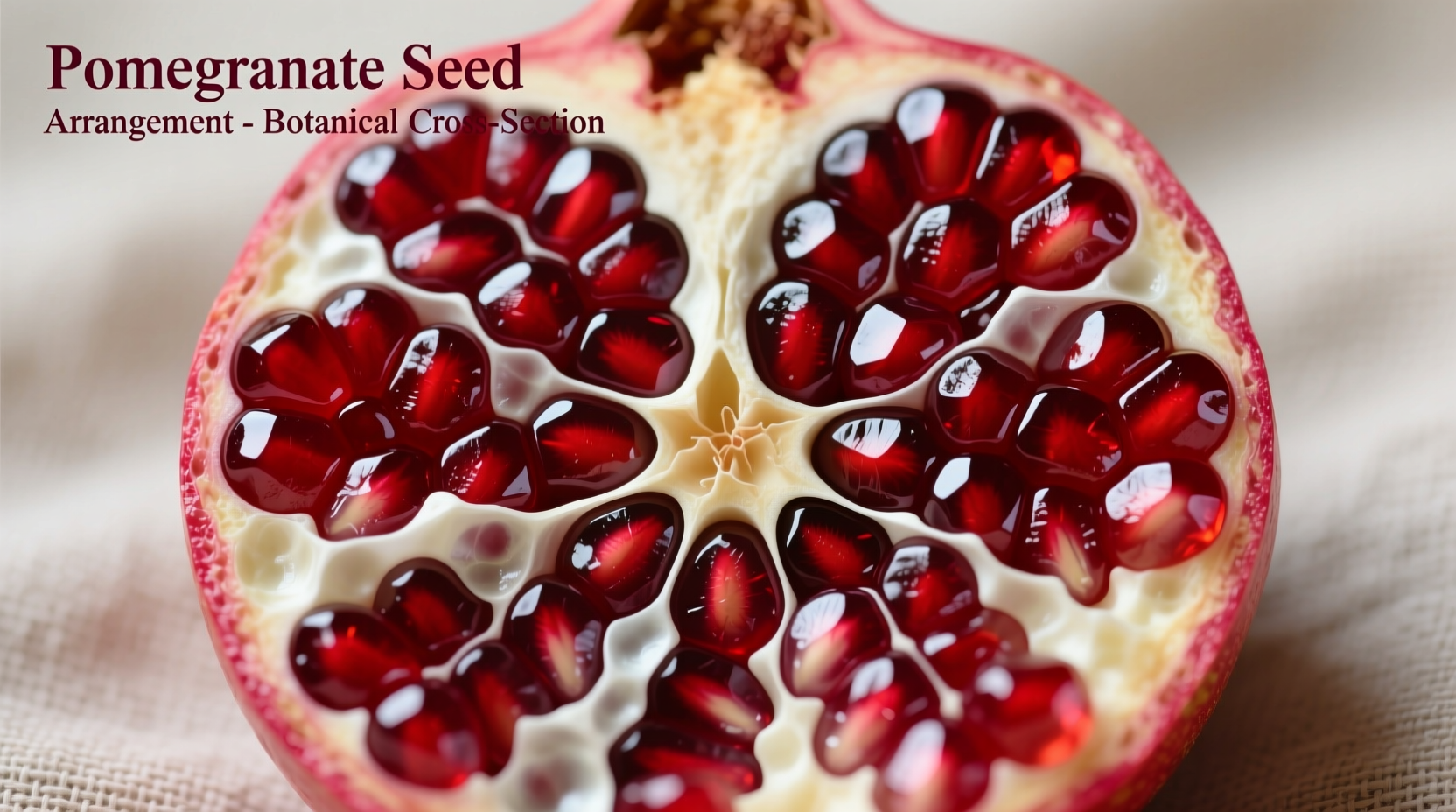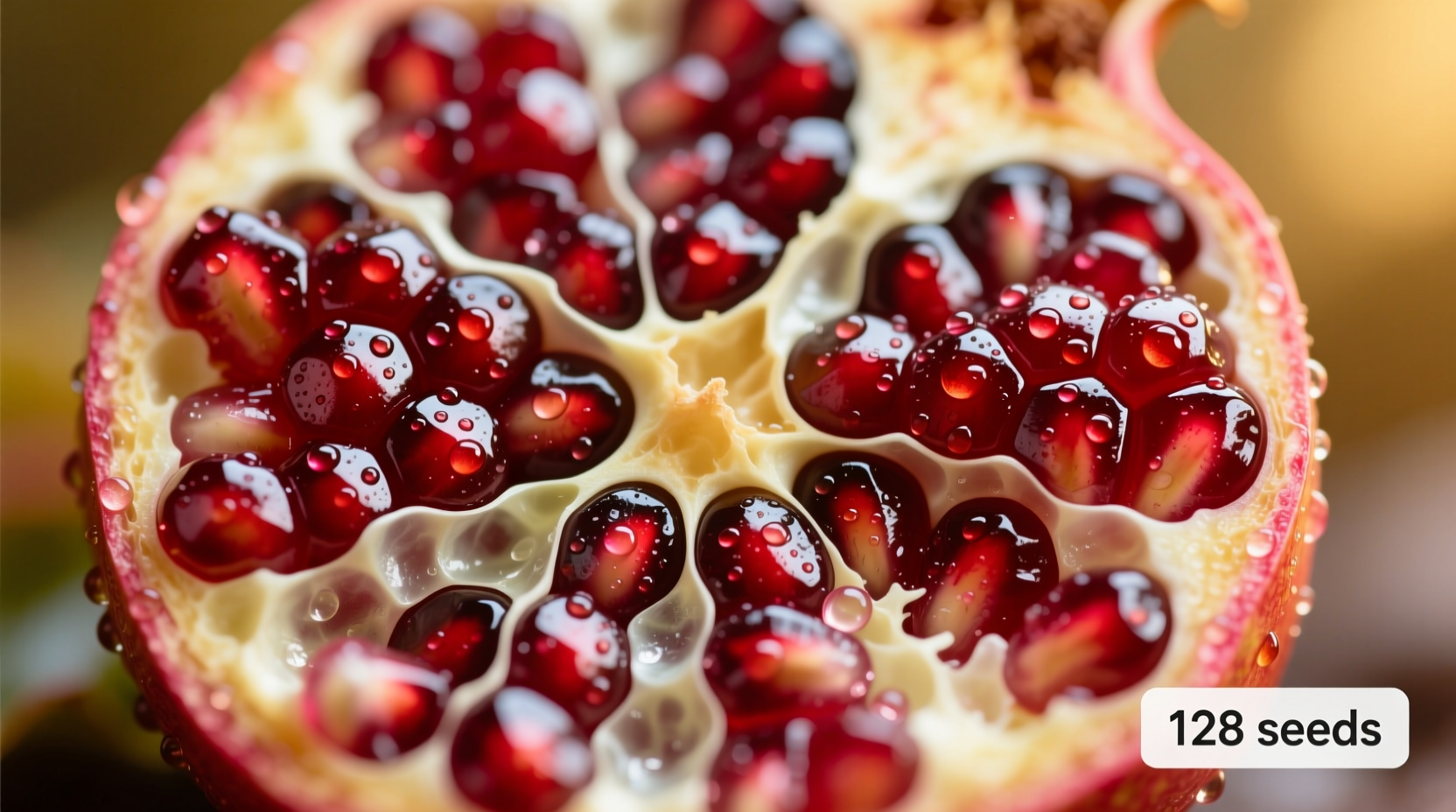Ever wondered exactly how many ruby-red jewels hide inside that leathery pomegranate skin? Whether you're meal prepping, calculating nutritional values, or simply satisfying culinary curiosity, knowing the precise seed count matters more than you might think. Let's explore the fascinating world of pomegranate seeds with scientifically verified information you can trust.
Why Pomegranate Seed Count Actually Matters
Understanding pomegranate seed quantity isn't just trivia—it directly impacts your kitchen experience. Chefs rely on accurate seed counts for recipe scaling, nutritionists calculate precise antioxidant values, and home cooks save valuable prep time when they know what to expect. A single pomegranate's seed count determines:
- Exact serving sizes for dietary tracking
- Recipe ingredient proportions
- Time required for deseeding
- Commercial harvesting efficiency
What Determines Pomegranate Seed Numbers?
Several key factors influence how many seeds you'll find inside each pomegranate. Understanding these variables helps explain why seed counts vary significantly between fruits.
Pomegranate Variety Differences
Not all pomegranates are created equal. Different cultivars produce dramatically different seed quantities. Research from the University of California's Agricultural Extension reveals substantial variations:
| Pomegranate Variety | Average Seed Count | Common Growing Regions |
|---|---|---|
| Wonderful | 800-900 | California, Arizona, Mediterranean |
| Acco | 600-750 | Israel, South Africa |
| Mollar de Elche | 1,000-1,300 | Spain |
| Dholka | 400-600 | India |
Source: University of California Cooperative Extension
Fruit Size Correlation
While larger pomegranates generally contain more seeds, the relationship isn't perfectly linear. A study published in the Journal of Horticultural Science analyzed 500 pomegranates across multiple varieties and found:
- Fruits weighing 200-250g typically contain 400-600 seeds
- Fruits weighing 250-350g typically contain 600-900 seeds
- Fruits weighing 350-500g typically contain 900-1,200+ seeds
How to Accurately Count Pomegranate Seeds
Getting an exact seed count requires proper technique. Follow these professional methods used by agricultural researchers:
- Cut the pomegranate horizontally around the equator
- Gently separate the two halves
- Submerge in a bowl of water (seeds sink, membrane floats)
- Loosen seeds from membrane underwater
- Strain and count seeds on a light-colored surface
This water method prevents juice stains and ensures complete seed recovery. Commercial operations use specialized machinery that achieves 99.5% extraction efficiency according to USDA Agricultural Research Service data.

Practical Applications of Seed Knowledge
Knowing pomegranate seed counts transforms how you use this ancient fruit:
For Home Cooks
When following recipes that specify "seeds from one pomegranate," understanding the typical 800-900 seed range helps you adjust other ingredients proportionally. If your fruit yields significantly more or fewer seeds, compensate by adjusting liquid ingredients by 10-15%.
Nutritional Planning
Each pomegranate seed contains approximately 1.5 calories and 0.3g of carbohydrates. With an average medium pomegranate containing 850 seeds, you're consuming about 1,275 calories and 255g of carbs—valuable information for precise dietary tracking.
Commercial Harvesting Insights
Commercial growers optimize harvest timing based on seed development. Research from the USDA Agricultural Research Service shows that seed count peaks when the fruit reaches 14-16° Brix (sugar content), typically 5-7 days after the skin fully develops its characteristic color.
Common Misconceptions About Pomegranate Seeds
Several myths persist about pomegranate seeds that deserve clarification:
- Myth: All pomegranates have exactly 613 seeds
Fact: This religious/cultural number varies significantly in reality - Myth: Seed count determines sweetness
Fact: Sugar content relates to growing conditions, not seed quantity - Myth: More seeds mean better quality
Fact: Quality depends on aril juiciness and flavor complexity
Maximizing Your Pomegranate Experience
Now that you understand pomegranate seed quantities, use this knowledge to enhance your culinary adventures. Select fruits with smooth, unblemished skin that feel heavy for their size—these typically yield higher seed counts with better juice content. Store whole pomegranates in cool, dry conditions for up to two months, or refrigerate for extended freshness.
When preparing, remember that the water method not only makes deseeding easier but preserves the delicate membrane structure that protects seed integrity. For recipe scaling, consider that 1 cup of pomegranate seeds equals approximately 275-300 individual arils from a standard Wonderful variety.











 浙公网安备
33010002000092号
浙公网安备
33010002000092号 浙B2-20120091-4
浙B2-20120091-4